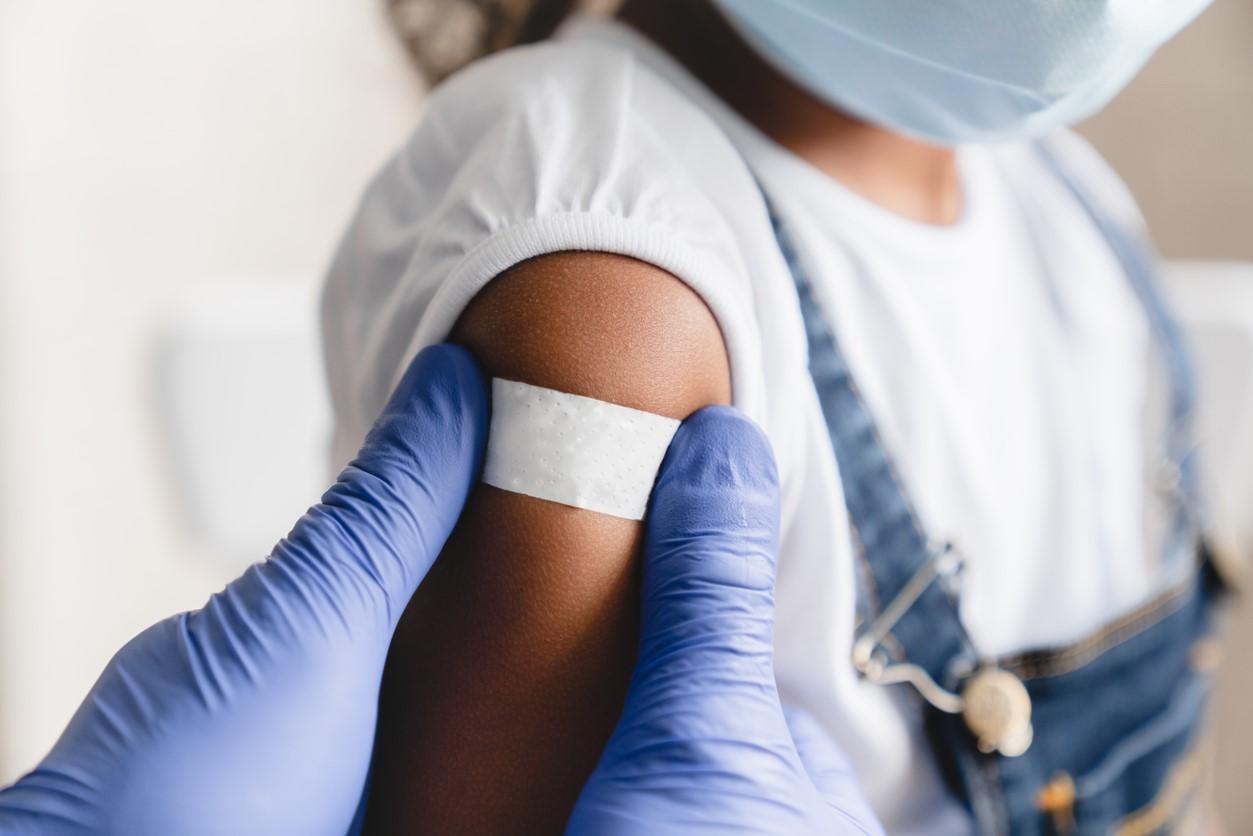The estimated effectiveness of two COVID-19 vaccine doses was 61% among children and 67% among adolescents in Argentina during Delta variant predominance and 16% and 26%, respectively, during the Omicron period, finds a test-negative, case-control study published in BMJ.
Overall estimated vaccine effectiveness (VE) against death during both periods was 89% among the entire 3- to 17-year-old group. When considering only the Omicron wave, VE against death was 67% in children and 98% in adolescents.
The researchers mined data from two national registries on 139,321 infected children (ages 3 to 11 years) and adolescents (ages 12 to 17) and matched, uninfected controls, all of whom underwent polymerase chain reaction (PCR) or rapid antigen testing from September 2021 to April 2022.
Slightly over half of participants were considered fully vaccinated, having received either two doses of the mRNA Moderna or Pfizer/BioNTech COVID-19 vaccines (adolescents) or the inactivated Sinopharm vaccine (children). The median interval from the second dose to testing was 66 days among adolescents and 54 days for children.
Sinopharm vaccine conferred least protection
Estimated VE against COVID-19 infection was 61.2% in children and 66.8% in adolescents during the period dominated by the Delta variant and 15.9% and 26.0% during Omicron. VE fell over time, especially amid Omicron, from 37.6% at 15 to 30 days after vaccination to 2.0% after 60 or more days in children and from 55.8% to 12.4% in adolescents.
Protection against infection was lower and dropped more precipitously among the Sinopharm-vaccinated children (from 37.6% to 2%) than among adolescents vaccinated with the Moderna or Pfizer vaccines (from 55.8% to 12.4%).
All combinations of mRNA vaccines yielded comparable results in adolescents. VE amid Delta was 70.2% among those who received two Moderna doses and 64.1% among those given two Pfizer doses (homologous dosing). The sequence of the Moderna followed by the Pfizer vaccine yielded a VE of 66.3% (heterologous dosing), while for Pfizer followed by Moderna, VE was 88.9%.
During the Delta period, two doses of Moderna or Pfizer showed a VE of 17.9% and 28.1%, respectively. Among adolescents who received the Pfizer before the Moderna vaccine, VE was 40.6%, while it was 31.5% among those who received the Moderna vaccine first.
VE amid Delta was 70.2% among those who received two Moderna doses and 64.1% among those given two Pfizer doses. The sequence of the Moderna followed by the Pfizer vaccine yielded a VE of 66.3%, while for Pfizer followed by Moderna, VE was 88.9%.
A total of 51 COVID-19 deaths occurred among infected participants, 7 of them during the Delta period. Thirty of the 51 were unvaccinated (16 children, 14 adolescents), while 8 were partially vaccinated (3 and 5), and nine were fully vaccinated (6 and 3), and four had an "other" vaccination status (2 and 2). VE against COVID-19 Omicron death was 66.9% in children and 97.6% in adolescents.
Vaccination of kids, teens still recommended
The researchers said that VE was high against death in children and adolescents, regardless of the predominant circulating variant. "Vaccines were effective in preventing SARS-CoV-2 infection in the short term after vaccination, being lower when the omicron variant was predominant and decreasing sharply over time," they wrote. "Heterologous mRNA schedules showed comparable to superior vaccine effectiveness in comparison with homologous schedules."
In a related commentary, Pilar Florentino, PhD, of the Oswaldo Cruz Foundation in Salvador, Brazil, and colleagues said that the study may have found lower VE in children because they tend to have no or mild COVID-19 symptoms, which can lead to many unidentified infections and an underestimate of VE. Children are also much more likely than adults to be infected with other respiratory viruses, which can lead to missed diagnoses and misdiagnoses.
"Finally, debate persists around whether the reduced dose of mRNA vaccines (Pfizer-BioNTech and Moderna) given to children under 12 years could lead to lower levels of protection," they wrote. But VE in children "seems to be lower than in adults (against mild or severe disease), even for those given inactivated virus vaccines that contain the same dose for both adults and children."
They said that the evidence is sufficient for public health officials to continue to support COVID-19 vaccination of children and adolescents. "Further real world studies will help to answer the remaining questions surrounding vaccine effectiveness in this age group," they wrote. "Meanwhile, in addition to vaccines, non-drug interventions remain central to containing the burden of disease at the community level."




















